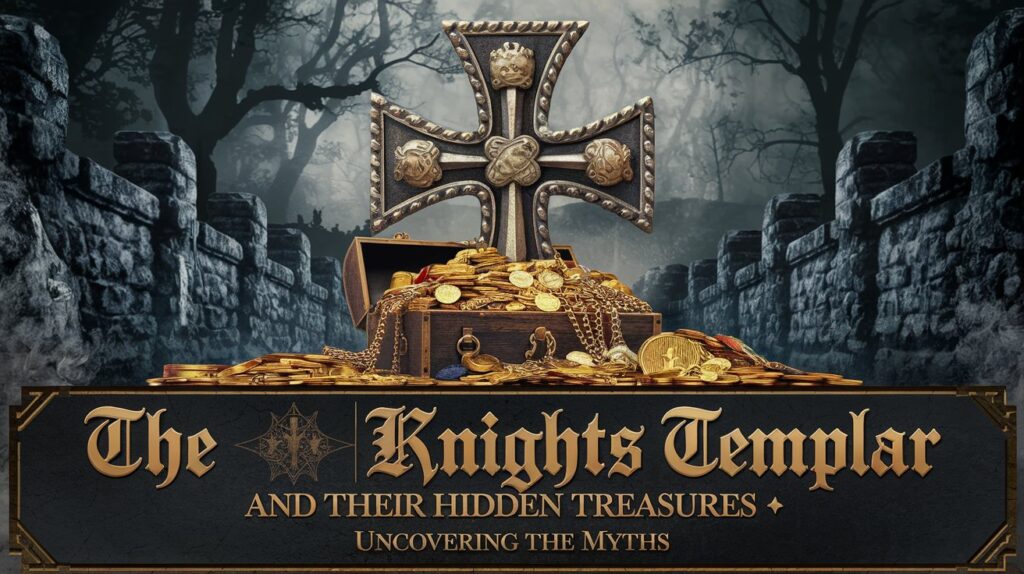The Knights Templar and Their Hidden Treasures

Introduction
The Knights Templar, a medieval Christian military order, have long been shrouded in mystery and legend. Established in the early 12th century, they gained fame for their military prowess and their role in the Crusades. However, it is the tales of their hidden treasures that continue to captivate the imagination of historians and treasure hunters alike. This article explores the history of the Knights Templar, the treasures they accumulated, and the myths surrounding their fabled wealth.
The Origins of the Knights Templar
Founded around 1119 in Jerusalem, the Knights Templar were initially established to protect Christian pilgrims traveling to the Holy Land. The order quickly grew in power and wealth, gaining the support of the Catholic Church and influential European monarchs. Their distinctive white mantles adorned with a red cross became symbols of their dedication and bravery.
The Role of the Templars in the Crusades
The Templars played a significant role in the Crusades, engaging in numerous battles and establishing fortifications across the Holy Land. They were known for their disciplined military tactics and formed a crucial part of the Christian forces. Over time, they became not only warriors but also skilled financiers, managing vast estates and engaging in banking practices.
Accumulation of Wealth
As the Templars expanded their influence, they acquired considerable wealth. Their financial operations included:
- Land Ownership: The order owned extensive properties throughout Europe and the Holy Land, generating significant income.
- Banking and Loans: The Templars developed early banking systems, offering loans and safeguarding deposits for nobles and pilgrims.
- Relics and Artifacts: They collected valuable relics, including sacred items believed to have belonged to early Christian figures, further enhancing their status.
The Fall of the Templars
The downfall of the Knights Templar began in the early 14th century, primarily due to political motivations. In 1307, King Philip IV of France, deeply indebted to the Templars, ordered the arrest of many members of the order. Accusations of heresy, corruption, and other crimes led to a widespread campaign against the Templars. By 1312, Pope Clement V officially dissolved the order, and many knights were executed or imprisoned.
Legends of Hidden Treasures
Following their disbandment, stories of hidden Templar treasures began to circulate. These legends suggest that the Knights concealed their wealth to prevent it from falling into the hands of their enemies. Some of the most famous tales include:
- The Treasure of Jacques de Molay: The last Grand Master of the Templars, Jacques de Molay, allegedly hid vast treasures before his execution. Many believe he revealed the location to a select few before his death.
- The Oak Island Mystery: Some theories propose that the Templars buried their treasure on Oak Island in Nova Scotia, leading to centuries of treasure hunts and speculation.
- The Holy Grail: There are also legends connecting the Templars to the Holy Grail, suggesting that they possessed it or knew its whereabouts, further fueling the allure of their hidden treasures.
Modern-Day Treasure Hunts
The myths surrounding Templar treasures have inspired numerous treasure hunts and explorations over the years. Adventurers, historians, and enthusiasts have sought to uncover the secrets of the Templars, leading to excavations and investigations in various locations linked to the order. While many expeditions have yielded little, the mystery continues to draw attention and intrigue.
Conclusion
The Knights Templar remain a subject of fascination, not only for their historical significance but also for the legends of their hidden treasures. As tales of their wealth and secrets endure, they continue to inspire curiosity and adventure, ensuring that the legacy of the Templars lives on in both history and popular culture. Whether or not their treasures are ever found, the stories surrounding them will continue to captivate generations to come.



Post Comment